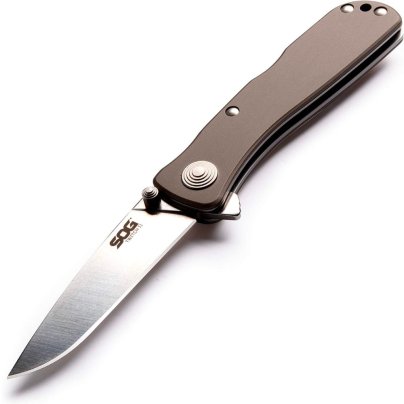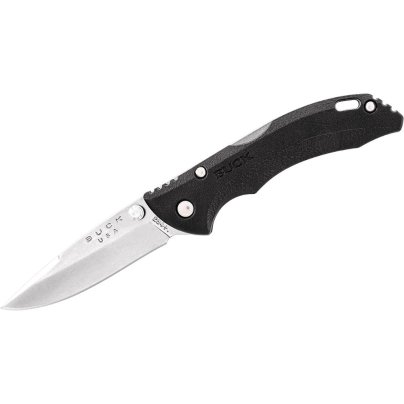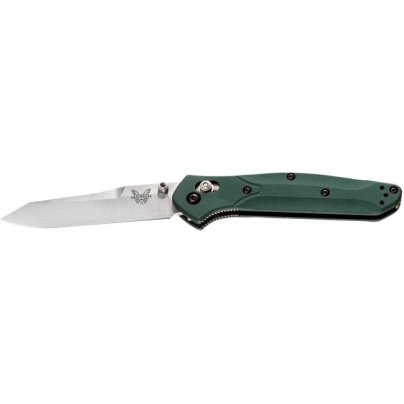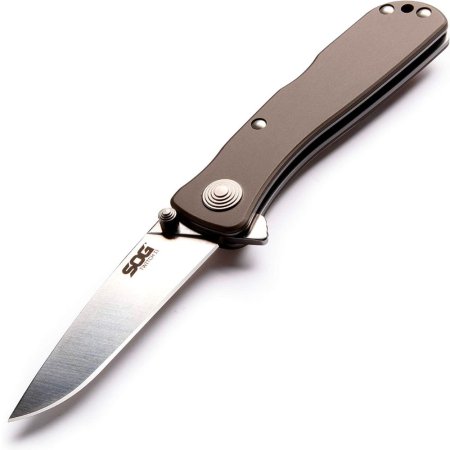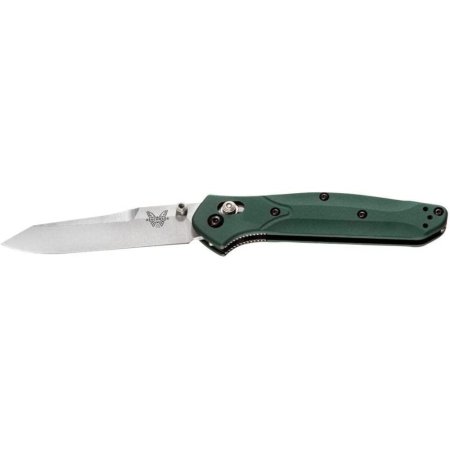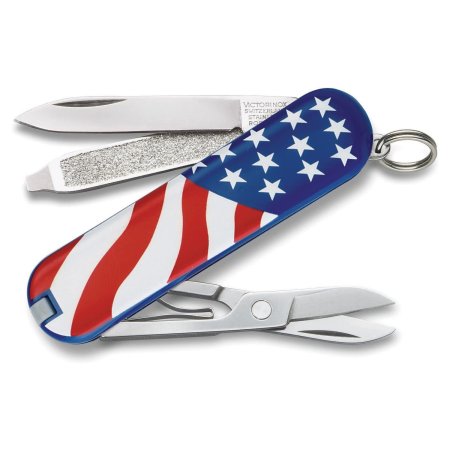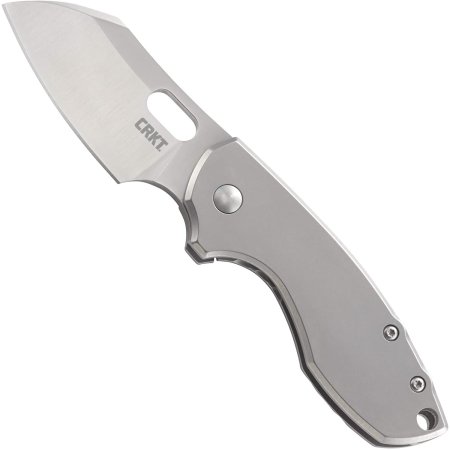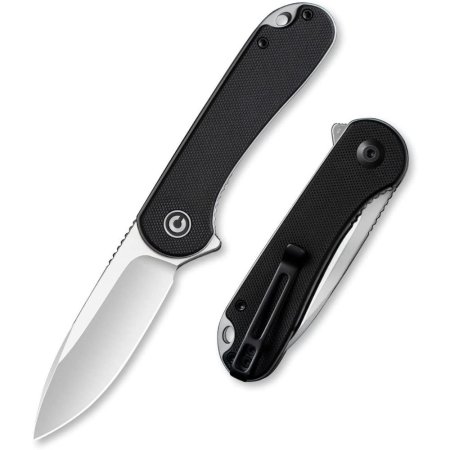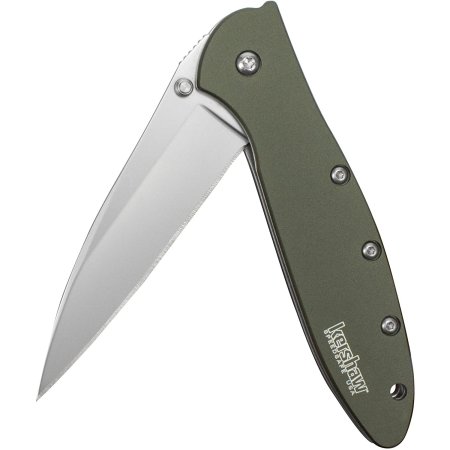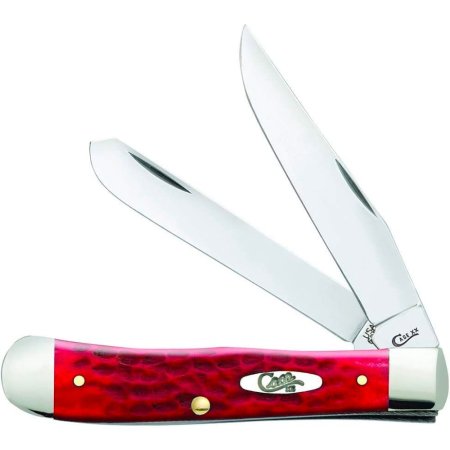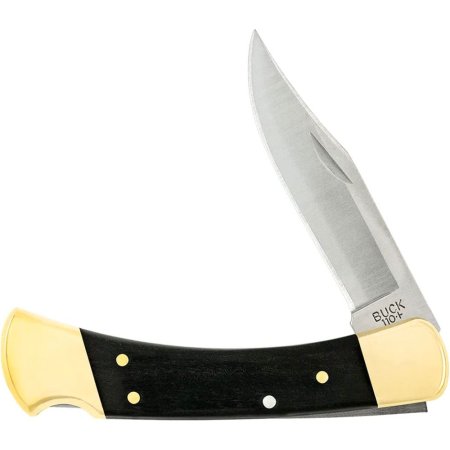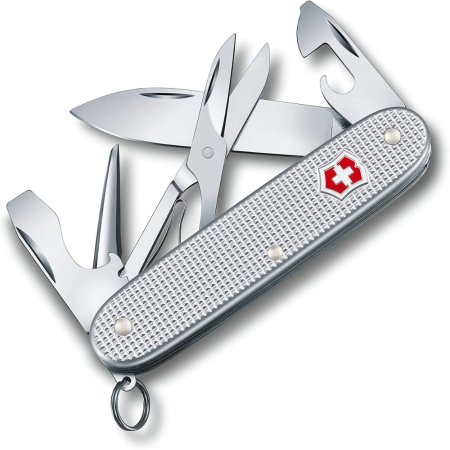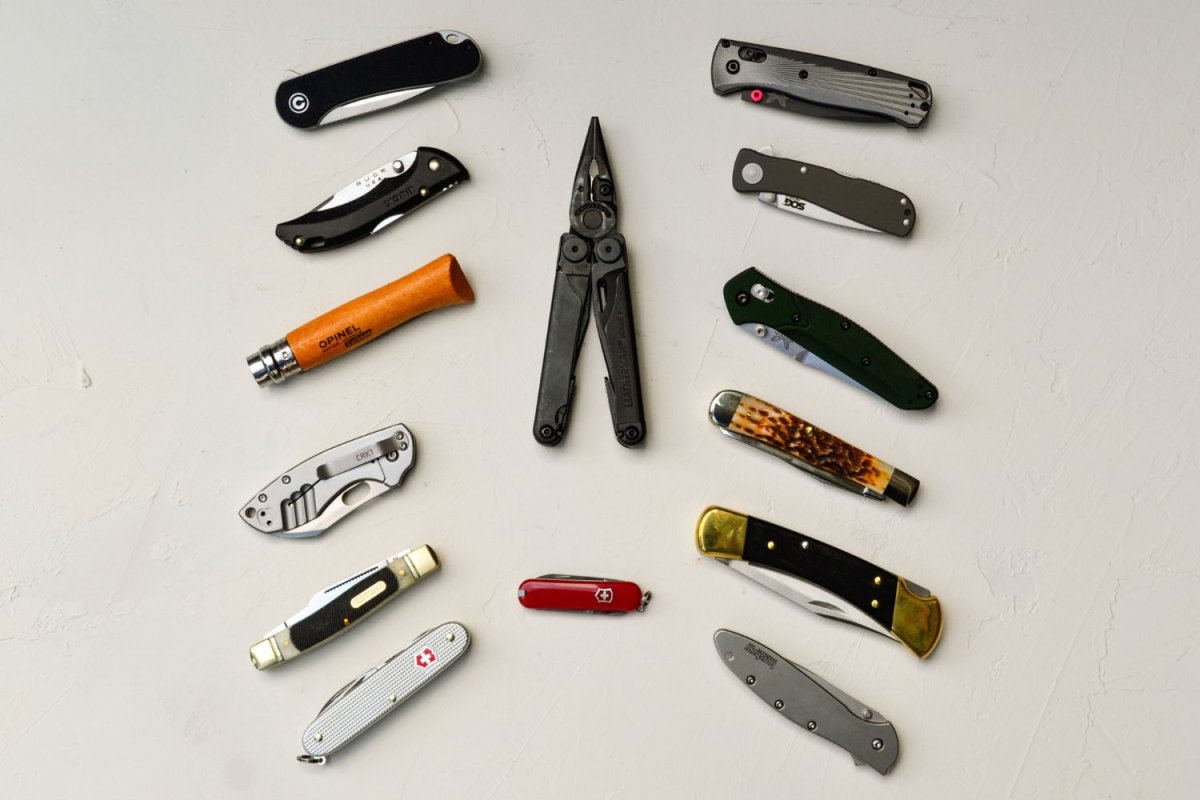
We may earn revenue from the products available on this page and participate in affiliate programs. Learn More ›
Thanks to its compact folding design, a pocket knife allows the blade to be stored in the handle, and the tool itself can be tucked away in a small space, such as a pocket, to carry for use on the go. Many folks are familiar with the Swiss Army knife for its recognizable red housing, small size, and the assortment of implements in addition to the blade that qualifies it as a multi-tool. True pocket knives, however, have a larger blade and handle, useful for whittling, opening packages, trimming branches, and many other cutting chores around the home, at work, or on a camping trip.
While such versatility is valuable, some of the top pocket knives have more specific functions and features. We rounded up more than a dozen models from the most popular manufacturers in our search for the best pocket knives. Each product was selected based on thorough research and investigation into a wide range of quality models to determine the top performers in each category. Read on to learn how we whittled our list down to the best pocket knives available based on size, shape, materials, craftsmanship, and function, and how each of our picks performed in our tests.
- BEST OVERALL: SOG Twitch II Pocket Knife
- BEST BANG FOR THE BUCK: Buck Knives 284 Bantam BBW Pocket Knife
- UPGRADE PICK: Benchmade 940 Osborne Pocket Knife
- BEST MINI: Victorinox Swiss Army Classic SD Pocket Knife
- BEST SMALL: CRKT Pilar Folding Pocket Knife
- BEST EDC: Civivi Elementum Flipper Knife
- BEST MULTI-TOOL: Leatherman Wave+ Multi-Tool
- BEST SPRING-ASSISTED: Kershaw Leek Pocket Knife
- BEST WITH WOOD HANDLE: Opinel No. 08 Carbon Steel Folding Pocket Knife
- BEST FOR WORK: Case XX Trapper Pocket Knife
- BEST FOR WHITTLING: Old Timer Genuine Bone Senior Folding Pocket Knife
- BEST FOR CAMPING: Buck Knives 110 Folding Hunter Knife
- BEST SWISS ARMY KNIFE: Victorinox Swiss Army Pioneer X Alox Pocket Knife
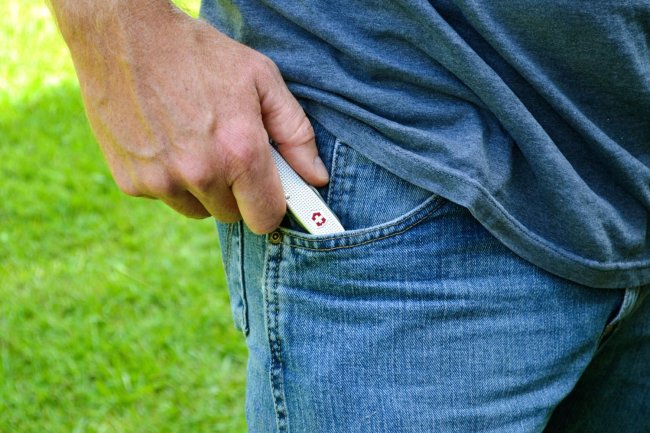
How We Tested the Best Pocket Knives
We spent 2 weeks researching knife companies and parsing design and material differences to find the most popular and dependable pocket knives for a broad range of uses. After identifying more than 50 likely candidates, we followed the criteria noted in this guide to narrow the list to those found here. Then we brought them in for field testing.
The first phase of our tests were controlled and replicated in the same way with the same materials for each knife. After unboxing and recording each knife’s weight and measurements, we tested for piercing, whittling, slicing, and coarse cutting ability.
To test piercing ability, we attempted to run the tip through a scrap of rawhide and recorded a simple “yes” or “no.” Our whittling test entailed shaving a 1-inch-thick branch of greenwood oak down to a pencil point. Next, we cleaned the blade without sharpening it and sliced an apple into wedges to test edge retention and slicing capability. Finally, we touched up the blade as needed on a sharpening stone before cutting three pieces each of ¼-inch sisal rope, garden hose, and 3-inch linear cuts in cardboard.
After each test we scored every blade according to completion of the test and finesse in doing so. We also noted observations regarding edge retention, user comfort, or other subjective notes. We recorded the scores on a rubric and awarded the titles listed above based on the test scores and observation notes.
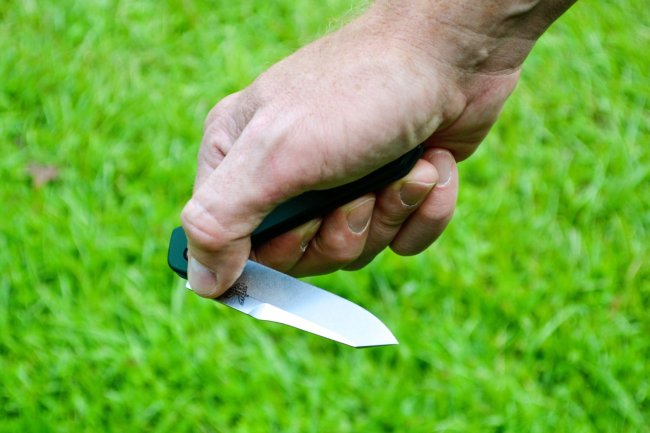
Our Top Picks
Whether you’re taking up whittling, heading out on a camping trip, or simply looking for a useful tool for everyday carry, there’s likely a knife on this list that’s right for your purposes. Read on to find out why we included these selections among the best pocket knives available and how each knife performed on our tests.
Best Overall
SOG Twitch II Pocket Knife
Pros
- Spring-assisted opening allows for quick, convenient, single-handed operation
- Reversible tip-up pocket clip offers easy right- or left-handed access
- Hard-anodized machined aluminum handle and a straight edge with drop point combine for general-purpose cutting
Cons
- Compact size may not be comfortable in large hands
Product Specs
- Blade material: AUS-8 Japanese steel
- Blade length: 2.65 inches
- Locking mechanism: Lockback with safety
The SOG Twitch II has developed a loyal following among knife enthusiasts because of its lightweight yet tough and dependable construction, convenient but not too aggressive assisted-opening flipper design, and moderate price point. The AUS-8 stainless steel drop-point blade goes through SOG’s cryogenic heat treatment process for improved toughness and extended wear. The model we tested featured a hard-anodized machined aluminum handle with satin finish, a reversible tip-up pocket clip, and weighed in at 2.55 ounces. The overall length was 6.2 inches, with a blade length of 2.65 inches.
As a compact knife with a thin profile, the Twitch II was lightweight for comfortable pocket carry. We experienced no poking or discomfort as can be the case with clipped knives. The combination of a reversible clip and lockback made this one of the better one-handed knives we tested for right- or left-handed users, but a sliding safety switch meant to avoid accidental opening does not work as easily with one hand—we left the safety disengaged throughout most of our testing. The midrange price was commensurate with the overall knife quality.
The blade steel in this knife proved to be tough and dependable. It was sharp right out of the box and, in our cutting tests, it remained sharp enough to slice an apple skin cleanly after whittling a greenwood stick for 20 minutes. The blade shape was generally functional for piercing, slicing, and chopping. One point of discomfort for users with larger hands is that the handle measures just under 3.5 inches long. It’s great for light-duty work but feels less secure for detailed or heavy-duty cutting tasks.
Get the SOG pocket knife at Amazon, Cabela’s, or Bass Pro Shops.
Best Bang for the Buck
Buck Knives 284 Bantam BBW Pocket Knife
Pros
- Glass-reinforced nylon handle is extremely lightweight and durable
- Thumb stud and lockback make for easy one-handed opening with either hand
- Affordable price eliminates concerns about losing or lending the knife
- Available in 3 handle colors: black, Mossy Oak Break Up Country Camo, and Mossy Oak Orange Camo
Cons
- High-carbon steel blade is vulnerable to rusting and corrosion
Product Specs
- Blade material: 420HC stainless steel
- Blade length: 2.75 inches
- Locking mechanism: Lockback
With a conveniently placed thumb stud on the blade, this Buck Knives drop-point knife can be opened easily with just one hand, making it a great tool to have in case of emergency. While one hand can apply pressure to a wound, the other can quickly open the knife to cut bandages. The drop-point blade is made of high-carbon steel for good strength and edge retention, as long as it’s properly maintained.
The blade is also resistant to rust and folds up easily into the glass-reinforced nylon handle. Finger indents and a textured surface on the handle help to improve the user’s grip and reduce the potential for the knife to slip while slicing or piercing. The blade measures 2.75 inches long and the handle is 3 inches long, for a total length of 5.75 inches, and it weighs just 1.45 ounces.
The budget-friendly price of this Buck knife means users may not need to worry too much about losing it, but since it’s a durably built little tool, folks are likely to appreciate it nonetheless. Our tests also showed it to be as capable as it is affordable. The lightweight reinforced nylon handle was long enough and balanced perfectly at the pivot point for comfortable operation, while the thumb studs and lockback mechanism worked equally well for right- and left-handed testers. The 284 Bantam lacks a pocket clip and has a chunkier handle than the competitors we tested, but it was comfortable to carry in the pocket.
The most important standout feature was the signature Buck blade. It stayed sharp throughout our abuse, and only required a quick wash and a few passes on a honing rod to slice apples for lunch. Plus, the chunky handle actually felt more comfortable than most of the low-profile competitors for heavy-duty cutting, and the steel was definitely up to the task.
Get the Buck Knives Bantam pocket knife at Amazon, Bass Pro Shops, or KnifeCenter.
Upgrade Pick
Benchmade 940 Osborne Pocket Knife
Pros
- Premium blade steel holds a sharp edge and resists corrosion and rusting
- Anodized aluminum handle with reversible deep pocket clip provides a great grip
- Reverse tanto blade is good for piercing as well as cutting and slicing
Cons
- Premium price point for top-quality materials and design
Product Specs
- Blade material: CPM-S30V premium steel
- Blade length: 3.4 inches
- Locking mechanism: Axis lock system
Use this premium reverse tanto knife for a range of different purposes from effective self-defense to simple household tasks, such as opening moving boxes. Benchmade has designed the pocket knife with an axis lock system, ensuring that once the folding knife is opened, it won’t close on its own. This peace of mind makes it an ideal option for camping, fishing, or even to keep in a first aid kit where the reliable mechanism can come in handy during an emergency.
The pocket knife has a 3.4-inch stainless steel blade that’s resistant to corrosion and rusting, though regular users will want to sharpen the blade to increase edge retention. It has a lightweight and extremely durable anodized aluminum handle that feels comfortable in the hand and holds up to the elements.
A quick note about the CPM S30V steel that Benchmade uses in the 940 Osborne: This hardened stainless steel is fairly easy to sharpen—as we quickly recognized in our testing—along with exceptional wear and corrosion resistance. Its all-around high performance lead some experts to consider it the best blade material there is, but it’s very expensive and that it impacts the price of the knife.
With its longer handle and blade, the 940 Osborne felt well balanced and capable of all cutting tasks. We really liked the reverse tanto point because it places more strength behind the blade tip for piercing, even though the point is broader than many of the others we tested. It also leaves a nice amount of upward curve in the edge for efficient slicing action. For general-purpose use, this blade led the pack.
We also liked the micro texture of the anodized aluminum handle. It provided an excellent grip to eliminate slipping in sweaty hands without grooves or pits to collect mud and debris. The knife only weighs 2.9 ounces, which is another plus. Our overall impression: built to last, rugged but lightweight, easy to work with, and really nice styling.
The thumb studs, reversible tip-up pocket clip, and axis locking system made for extremely easy and smooth one-handed operation, for both right- and left-handed users. The only possible downside was because of its longer size, we occasionally had to shift the knife’s pocketed position when seated.
Get the Benchmade pocket knife at Amazon, REI, or Benchmade.
Best Mini
Victorinox Swiss Army Classic SD Pocket Knife
Pros
- Boasts a variety of blades and tools for 7 different functions
- Casing is available in 16 different handle colors and patterns
- Small enough to keep on a keychain, with a keychain loop included, and weighs just 0.3 ounces
Cons
- Light-duty blade is only suitable for the smallest tasks like box or letter opening
- There’s no locking mechanism
Product Specs
- Blade material: High-carbon stainless steel
- Blade length: 1.25 inches
- Locking mechanism: None
If toting a full-size pocket knife seems like it would be a bit too heavy or bulky, check out this compact, lightweight multi-tool option. This nicely priced knife weighs only 0.75 ounces and the handle measures just 2.3 inches long, making it easy enough to carry on a keychain.
This Victorinox model includes a knife blade, scissors, nail file, screwdriver, tweezers, and toothpick, each made with corrosion-resistant stainless steel. The handle, made of ABS plastic, can be customized with over 25 different visual designs (at an additional charge).
We quickly concluded that this tiny knife was just the right tool for our keychain. At just 0.75 oz and a little more than 2 inches long, the Victorinox Classic SD’s weight and size were just like adding another key. Although too small for our apple-slicing and stick-whittling tests, it did a great job opening mail and packages. In addition to the blade, we really liked the scissors—a Swiss army knife fan favorite.
In no way did we think of this tiny tool as a toy. It features the same high-carbon stainless steel construction found in full-size models, and ours was paired with the classic Victorinox red Cellidor handle with silver-cross-and-shield logo.
Get the Victorinox Swiss Army Classic pocket knife at Amazon, Victorinox, or Swiss Knife Shop.
Best Small
CRKT Pilar Folding Pocket Knife
Pros
- Stainless steel blade is highly resistant to corrosion and rusting
- Ambidextrous thumb slot for one-handed opening is convenient
- Adjustable right-side pocket clip makes for convenient carrying
- Heavy-duty sheepsfoot blade is suited for a range of everyday chores
Cons
- Regular sharpening required to retain the edge
- Frame lock and pocket clip are not convenient for left-handed users
Product Specs
- Blade material: 8Cr13MoV stainless steel
- Blade length: 2.4 inches
- Locking mechanism: Frame lock
Despite its small 2.4-inch blade, this versatile pocket knife can be used for a wide assortment of tasks. When the blade is extended, the entire length is 5.9 inches; folded, it’s a mere 3.5 inches, making it easy to tuck away in a pocket or purse.
The blade is made of high-quality stainless steel, and it folds into a stainless steel handle with an indented ergonomic grip. This CRKT knife can be opened in one hand by both left- and right-handed people, but rather than the typical dual-sided thumb stud, it has an ambidextrous thumb slot in the tang, allowing users to flip open the blade quickly. It also has a frame locking mechanism for security when the blade is in use.
The CRKT Pilar pocket knife really intrigued us because of its unusual design. The sheepsfoot blade’s heavy spine made a convenient anchor point for the thumb to increase controlled pressure, and the in-curved base of the blade made a secure handle extension for the index finger. This configuration allowed us to increase working pressure and with greater control. It was surprisingly comfortable to work with too, even for those with larger hands.
However, the heavy blade, short straight edge, and restricted point made the knife more of a specialty tool, something like a miniature cleaver. It worked well for slicing and chopping but lacked piercing ability. The steel used in this knife was a bit softer than some of the others we tested, so it wore a bit faster but sharpened faster, too.
The Pilar offered a changeable tip-up or tip-down right-side pocket clip, but we didn’t consider it to be truly left-hand-friendly due to the inclusion of a frame lock that only works for righties. At 3.8 ounces, its weight was noticeable when clipped on our pocket, but the size was small enough to stay out of the way.
Get the CRKT pocket knife on Amazon, CRKT, or BladeHQ.
Best EDC
Civivi Elementum Flipper Knife
Pros
- Lightweight design features a durable tool-grade steel blade
- Textured synthetic G10 handle with rounded edges is comfortable to carry and use
- Ceramic ball-bearing pivot and flipper-style blade allows for smooth one-handed operation
- Generously sized handle offers more comfortable use in larger hands
Cons
- Position of the blade lock and pocket clip are less convenient for left-handed users
Product Specs
- Blade material: D2 steel
- Blade length: 2.96 inches
- Locking mechanism: Liner lock
The Civivi Elementum boasts many of the features we look for in an everyday-carry knife, including functionality, economy, and durability. At just 2.8 ounces, it’s a lightweight pocket knife with a thin profile and right side, tip-up pocket clip for comfortable carrying. But it also features a generously proportioned 4-inch handle with smoothly curved bolsters and a textured G10 synthetic grip that users with all hand sizes should find comfortable to work with.
The tool-grade D2 steel blade is nearly 3 inches long, which is a great size for most cutting needs. It operates on a caged ceramic ball-bearing pivot assisted with a blade kick extension behind the pivot for smooth one-handed opening. A liner lock holds the blade securely in the working position. The blade features a hollow grind and drop point for a balance of rigidity and flexibility that give it extremely versatile cutting capability.
We were pleasantly surprised by the Civivi Elementum’s total package of versatile functionality, durable construction, and understated styling. At 4 inches long when closed, it was one of the longer pocket knives we tested, on par with the Benchmade 940, but securely placed in the value-price category. The durable commodity-steel blade and synthetic handle keep the price down but don’t degrade the knife’s utilitarian nature.
When carrying the knife (in a right pants’ pocket because this knife does not pretend to be left-hand-friendly), we noted that it rode smoothly without jabbing or poking when seated. The efficiently curved handle ends allow it to shift itself without getting caught on pocket folds. The clip is just stiff enough to hold well but clips on and off smoothly.
In our tester’s large hands, this knife was one of the easiest to operate one-handed. The combination of handle size, pivot movement, and blade kick proportions seemed just right, and the liner lock was efficiently stiff without becoming problematic. In use, the Elementum held an impressively sharp edge and proved capable of any cutting task, particularly slicing and precision cutting, where the hollow grind excelled.
Get the Civivi pocket knife on Amazon or Civivi.
Best Multi-Tool
Leatherman Wave+ Multi-Tool
Pros
- Multi-tool boasts 18 different implements for a variety of home, work, and outdoor tasks
- All tools lock in their working position for safer, more secure operation
- Includes a heavy-duty nylon belt sheath with hook-and-loop closure
- The 420HC steel is highly corrosion-resistant and easy to sharpen
Cons
- Heavy and bulky; not built to carry in the pocket
- Pivot points were very stiff and tight out of the box; break-in time is required
Product Specs
- Blade material: 420HC steel
- Blade length: 2.9 inches
- Locking mechanism: Frame locks
Some readers may be surprised to see such a heavy-duty multi-tool that weighs more than a half pound included in this guide. Multi-tools have been part of pocket-knife vernacular since the invention of the Swiss Army Knife, way back in the late 1800s. For many users, the robust build and functionality of a great multi-tool, like the Leatherman Wave+, makes a smart upgrade to replace their old EDC folding knife.
The Leatherman Wave+ weighs in at a whopping 8.45 ounces, more than double the weight of the heaviest regular pocket knife on our list, and it doesn’t really fit in the pocket. But it features 18 incredibly useful locking tools, and it comes with a heavy-duty nylon belt carry sheath. Durable construction quality and practical functionality make it one of the most popular multi-tools around for a host of chores at work, in the shop, at home, and in the outdoors.
The Wave+ feature lineup includes two knife blades: a drop-point straight blade and a serrated straight blade. Other tools include needle-nose pliers, regular pliers, wire cutters, hardwire cutters, electrical crimper, wire stripper, saw, scissors, ruler, can opener, bottle opener, wood/metal file, diamond file, large bit driver with reversible slotted/Phillips bit, small bit driver with reversible slotted/Phillips precision bit, and a medium-slotted screwdriver. Every tool locks in place for safe and secure operation and then conveniently folds away into the handle when not in use.
In our tests, the Leatherman Wave+ stood out as a high performer in terms of overall usefulness, but it rated lower on the comfort scale for its heavy build and more complicated operation. The various tool capabilities were far more robust than their counterparts on the Swiss Army Knives we tested. Right out of the box, the tool’s joints were tight and stiff, but after a break-in period, they loosened up nicely.
When it came to knife-specific applications, we liked that the Leatherman’s blades (as well as the file and saw) were accessible from the outside of the handle so that we didn’t need to open the tool fully to get to them. The frame locks for the knives operated simply and effectively. Both blades measured a hair under 3 inches long, which was ample length for every cutting task. We preferred the straight blade for slicing, chopping, and whittling and the serrated blade for cutting rope and other coarse tasks. The steel quality allowed the blades to hold an edge reasonably well through tough jobs, and they were easy to sharpen.
Get the Leatherman pocket knife at Amazon, Cabela’s, or Bass Pro Shops.
Best Spring-Assisted
Kershaw Leek Pocket Knife
Pros
- Steel handle boasts a fade- and scratch-resistant bead-blasted finish
- Stainless blade is easy to sharpen and offers excellent edge retention
- Drop-point blade with a straight edge is ideal for piercing and slicing
- Smooth and fast spring-assisted mechanism for 1-handed opening
Cons
- Not truly for ambidextrous use because the liner lock is positioned for right-handed users
Product Specs
- Blade material: 14C28N stainless steel
- Blade length: 3 inches
- Locking mechanism: Liner lock
In some situations, it’s impossible to use both hands to open a pocket knife, which is where this spring-assisted model can be a big help. Its thumb stud extends out from both sides of the blade, so that both left- and right-handed individuals can quickly flip it open. The spring-assisted system pushes the blade out, significantly increasing the opening speed. With practice, the user can present the blade in seconds.
This Kershaw knife has a 4-inch handle that comes in a host of color choices and blade finishes, including serrated or flat edge. The blade is made of high-performance carbon steel that has good edge retention, so it won’t need sharpening after every use.
At 3.05 ounces, the Kershaw Leek felt more substantial than it appears. It balances a comfortable 4-inch handle with a 3-inch blade for overall sizing in a sweet spot that fits most EDC needs. It measures less than ½-inch thick, which allows it to slide comfortably in and out of the pocket. We liked the changeable tip-up/tip-down right-side pocket clip for personalized comfort, but the frame lock prevents this from being a truly lefty-friendly knife.
Another standout feature is the blade kick tab and spring-assist mechanism. It makes for smooth, fast one-handed deployment that the others in our group couldn’t match. A sliding lock in the handle can be set to hold the knife closed, but we rarely used this feature beyond testing, and found it to be a hindrance for one-hand operation.
The straight-edge drop-point blade was a mixed bag. On one hand, the design offers a uniquely balanced feel and appearance; on the other hand, the fine blade tip, and low drop, led to some practical awkwardness. The fine tip offered little reinforcement against breaking, yet it was perfectly shaped for piercing and begged to be used as an awl. The total lack of upsweep in the blade’s edge made slicing much more difficult than the other drop points we tested. Stated another way, this knife excels at piercing and precision work where the blade tip is used for detailed cutting.
Get the Kershaw pocket knife on Amazon or KnifeWorks.
Best With Wood handle
Opinel No. 08 Carbon Steel Folding Pocket Knife
Pros
- Carbon-steel blade sharpens well and offers good edge retention
- Durable beechwood handle is lightweight and comfortable to use
- Original design remains a top seller after more than 130 years
- Features an attractive classic design and comfortable grip
Cons
- Wood handle is susceptible to swelling and cracking
- Blade steel is susceptible to corrosion if not properly cared for
Product Specs
- Blade material: XC90 carbon steel
- Blade length: 3.28 inches
- Locking mechanism: Collar lock
If a comfortable grip is a priority, look into the Opinel No. 08 Carbon Steel Folding Pocket Knife. Its durable beechwood handle feels soft in the hand, and there’s a curved tang for a more secure grip. The hard carbon-steel blade measures 3.28 inches, which is sturdy enough to cut through hardwoods and softwoods when carving or whittling.
The blade is flat, with a gentle curve toward the end, making it easy to work with either the edge or the belly of the blade. A locking mechanism keeps the blade in place whether the knife is open or closed, and at 4.31 inches long when closed, it’s a good size to carry in a pocket.
Beyond its rich history and cultlike following, the Opinel No. 08 intrigued us because of its simple construction and low-tech appearance. There must be a reason that the 130-year-old design has persisted—and the budget price point didn’t hurt either.
Weighing just 1.6 ounces, the knife’s bulky round handle belied a featherweight, well-balanced, and comfortably contoured tool. It was bulky in the pocket and lacked a pocket clip, but felt comfortable in hand. The manual collar lock rotated easily enough and stayed put when activated. Our blade pivoted with just enough stiffness to avoid accidental closure without feeling tight.
The thin, springy carbon-steel blade easily took on a razor-sharp edge and held it rather well while cutting rope, carving sticks, and slicing apples. Although we didn’t experience blade discoloration or handle swelling in the short test period, those risks are known to accompany Opinel’s classic knives with extended moisture exposure. We really liked this knife as a lightweight choice for camping, gardening, and outdoor cooking.
Get the Opinel pocket knife at Amazon, Opinel USA, or Cabela’s.
Best for Work
Case XX Trapper Pocket Knife
Pros
- Classic styling with high-quality materials and detailed craftsmanship make this a go-to work knife
- Jackknife design with 2 utilitarian blades, originally designed for cleaning small game, suits a large variety of uses
- Peach-seed jigged bone handle provides excellent working grip
- The 4-inch handle offers a comfortable grip, even for users with larger hands
Cons
- Some users may find this knife too large or bulky for everyday carry
Product Specs
- Blade material: 6254CV stainless steel
- Blade length: 3.25 inches (both blades)
- Locking mechanism: none
The Case XX Trapper was first designed for small game trappers and has become a favorite among collectors. The jackknife design features two full-length chrome vanadium-steel blades, a slender clip point, and a long spey point (a predominantly flat cutting edge). These traditional blades for trapping and cleaning game are just as suitable for EDC or a variety of outdoor pursuits. The 4.13-inch handle with peach-seed jigged bone grip offers a comfortable fit in hand.
Upon unpacking the Trapper, its 3.9-ounce weight was one of our first observations. This old-school pocket knife felt much more substantial than the contemporary flat-profile EDC knives we tested. The handle profile was slightly deeper than wide. With the textured bone scales, it offered excellent grip and working control. Detailed craftsmanship was evidenced by the smooth fit and finish, from the peach-seed jigged bone texturing to the perfectly flush transition between scales and bolster. Quality throughout!
Blade quality was outstanding, from the material to the edge grind. Chrome vanadium steel is well known to hold a nice edge (which it did throughout our tests). It develops a natural patina over time but must be cleaned and lightly oiled regularly to avoid corrosion. The mirrored factory finish looked great, but we wouldn’t expect it to last long with regular use. The blade pivots were buttery smooth and the edges were sharp right out of the box. The durability of the steel and longer blade reach gave this knife excellent capability for cutting rope and garden hose as well as pruning tree branches and slicing apples.
Get the Case XX pocket knife at Amazon, Cabela’s, or Deadwood Knives.
Best For Whittling
Old Timer Genuine Bone Senior Folding Pocket Knife
Pros
- Mirror-polished stainless steel blade holds its edge well and resists corrosion
- Includes 3 different blades designed for general and precision cutting tasks
- Natural bone handle with saw-cut texture offers outstanding grip
- Medium size and weight are suited to easy carry and comfortable use
Cons
- Even with the conveniently deep nail grooves, the blades were stiff opening
- Fit was not perfect, with the handle bolsters not quite flush with the bone scales
Product Specs
- Blade material: 9Cr18MoV stainless steel
- Blade length: 3 inches (longest blade)
- Locking mechanism: None
Old Timer Senior pocket knives have earned a traditional status of “my first pocket knife” thanks to their dependable performance, compact design, and affordable price point. Weighing in at 3.15 ounces, this knife feels substantial in hand and in the pocket. The classic design features a 3-inch clip-point blade and a 2.25-inch sheepsfoot blade at one pivot point, and a 2.25-inch spey-point blade at the opposite end. The model we tested featured natural bone handle scales with saw-cut texturing, brass pins, and nickel silver bolsters.
A popular favorite with a strong tradition, the Old Timer brand has changed hands a few times over the years with quality and reputation ups and downs. Judging from the 8OTB Senior we tested, quality control appears to be a priority at present. The size, iconic slightly S-curved handle, and three-blade selection has remained virtually unchanged for generations. What truly impressed us was the sharpness upon arrival, smooth operation, and the fit and finish of the model we received.
The first thing that stood out were the deep nail grooves in the blades, which made them easy to open. The blades pivoted smoothly, with a satisfying snap at the end of opening and closure. The factory edges on each of the three blades was exceptionally sharp for a knife at this price point, and they held their edges well throughout our whittling, slicing, and cutting tests. When it came time to resharpen, they took an edge quickly with just a few strokes across the stone.
We also noted the consistent fit of the scales and bolsters. The transition between them was smooth and even, as was the grind on the brass pinheads that hold the bone scales. This was nice to see on a selection that many buyers would consider a budget model. With its multiple blades, affordable price, and quality of construction, this one still makes a nice whittling knife or a first pocket knife for a young person.
Get the Old Timer pocket knife at Old Timer.
Best For Camping
Buck Knives 110 Folding Hunter Knife
Pros
- An excellent general-purpose choice for heavy-duty outdoor cutting tasks
- Includes a leather belt sheath for easy carry and access
- Outstanding fit and finish with natural ebony and polished brass handle are attractive
- Heat-treated 420HC steel blade sharpens easily and retains its edge exceptionally well
Cons
- Too large and heavy to be comfortably carried in a pocket
- The knife’s weight is balanced mid-handle, which decreases precision
Product Specs
- Blade material: 420HC steel
- Blade length: 3.75 inches
- Locking mechanism: Lockback
The Buck 110 has been around nearly 60 years with a loyal outdoors following from the start. As with other classic designs, it has its fair share of lighter, sleeker competition and experts who point out its flaws—such as its 7.35 ounces being too bulky to carry comfortably in a pocket. But for a camp knife that does it all, from prepping dinner to splitting kindling for the campfire and much, much more, it’s tough to beat the 110.
With its lack of specialization, Buck’s iconic folding hunting knife works as a task-neutral camp tool. The broad upswept clip-point blade made of heat-treated 420HC steel is well shaped and proportioned for piercing, slicing, chopping, and general cutting tasks. It is designed for two-handed operation with a nail groove, and the lockback is positioned to the rear of the handle. The one we tested featured beautiful Crelicam ebony handle scales. It also comes with a leather belt sheath.
Beyond its weight, which is nearly twice that of most pocket knives, we first noticed the Buck 110’s unique nontraditional appearance. The low, linear clip-point blade leaves a long stretch of useful straight edge toward the rear and midsection, which was useful for cutting rope and shaving sticks. The belly of the blade angled slightly forward, where we could apply more force for slicing apples or meat. The whole blade was heavy enough to split kindling and the acute tip offered excellent piercing ability. When we dulled the blade, it was fast and easy to resharpen—and it was very sharp.
We loved the feel of the smooth, bow-shaped wood handle with its lack of finger grooves. It allowed us to grip the tool as needed for the task at hand, rather than as the manufacturer suggests. But the 110’s handle was its leading contributor to weight. The attractive wood handle and polished brass bolsters are heavy, and they cause the knife’s weight to balance way back at the middle of the handle instead of up at the blade pivot, where we would prefer. This caused the knife to handle less precisely, which was the only issue we had with it.
Get the Buck Knives 110 pocket knife at Amazon or Buck Knives.
Best Swiss Army Knife
Victorinox Swiss Army Pioneer X Alox Pocket Knife
Pros
- A compact and lightweight multi-tool; fits comfortably in a pocket
- Pocket-knife platform with multi-tool functionality offers the best of both worlds
- High-quality steel is easy to sharpen with excellent edge retention
- Textured-aluminum grip gives this knife a sleek, spartan appearance
Cons
- Does not include a pocket clip; belt sheaths are sold separately
Product Specs
- Blade material: High-carbon stainless steel
- Blade length: 2.5 inches
- Locking mechanism: None
With more than 100 Victorinox Swiss Army Knife models on the market, it was surprisingly easy to uncover our top pick. The Pioneer X Alox includes the nine most popular tools found across the Swiss Army knife spectrum, but replaces the iconic red Cellidor with sleek, textured aluminum scales. The result is a lightweight 3.5-ounce knife that is packed with useful tools and compact enough to carry in the pocket
This model includes a 2.5-inch knife blade, scissors, a reamer/punch, can opener, small screwdriver, bottle opener, large screwdriver, wire stripper, and key ring. The blade and tools are made of high-carbon stainless steel that takes and holds an edge extremely well. Emblazoned on the matte aluminum scales is the iconic Victorinox cross-and-shield logo.
A few things stood out when we opened the Pioneer X. First, we noted that the bright aluminum handle scales would be much more visible and harder to misplace than even the traditional red Swiss Army knife handle on virtually any surface. Plus, it is textured to reduce slippage in sweaty hands. While the Alox’s sides don’t allow for the tweezers and toothpick slots found on most other models, we still preferred this one.
Next, after a quick inventory of the tools, we saw that all of our favorites were included. The older Pioneer models did not have scissors, so including them here was an excellent upgrade. In practice, we found that we used the scissors about 25 percent of the time and the blade about 60 percent of the time the week we carried this knife.
With so many tool options, we were somewhat surprised to find only one knife blade, but the one here proved to be just right for all of our needs. It was most effective and comfortable for whittling, cutting rope, and similar tasks. It’s a bit small for camp food preparation or other large tasks. It held its edge well through the cuts, and it was fast and easy to resharpen.
Though disappointed by the lack of a true Phillips screwdriver, the included “small screwdriver” can take on many of those applications. The can and bottle openers worked well, and we preferred the punch/reamer on this knife over the awl found on some other models we’ve used in the past. In our opinion, the Pioneer X offered more of the “right” tools and less excess than any Swiss Army knife we’ve used in the past.
Get the Victorinox Swiss Army Pioneer pocket knife at Amazon, REI, or Swiss Knife Shop.
Jump to Our Top Picks
What to Consider When Choosing the Best Pocket Knife
To find a pocket knife for everyday use, take these important shopping considerations into account.
Intended Use
A pocket knife can be carried and used on a daily basis or stowed in a tool box for occasional use. Typically, a pocket knife has three broad uses: general purpose, camping, and self-defense.
- General-purpose pocket knives have a point that sits well above the centerline of the blade to extend the cutting edge. These knives are typically used for cutting and slicing, not piercing, so the blade is more important than the tip or point. A clip-on pocket knife is a good option for use on a work site because there’s no need to fish it out of a pocket to make a quick cut.
- Camping pocket knives should be durable and water-resistant, helpful for making fire kindling with strips of wood, cutting rope, and slicing through fishing line or netting—all functions that likely leave the knife exposed to direct sunlight, cold winds, and water. The sharpest pocket knife is typically used for cutting rope and netting, though it’s important to note that the blade wears down quickly if it isn’t properly maintained.
- Self-defense pocket knives should have a quick spring-assisted opening so that the owner won’t waste precious time when in danger. These knives also have a point that sits at or near the centerline of the blade, making them ideal for piercing thrusts.
Keep in mind that there may be state and local laws that restrict carrying certain kinds of pocket knives. Check the local government website and consult the American Knife and Tool Institute’s guide on state knife laws to ensure that the pocket knife in question is legal to carry.
Size
As the term implies, a traditional pocket knife is small enough to fit comfortably inside a pocket; also small, a clip-on pocket knife attaches to a belt or the outside of the pocket for convenience. The average pocket knife will have about a 3-inch-long blade and a 4-inch handle, with a weight of approximately 3.5 ounces. However, good pocket knives may be available in larger versions for broad-stroke purposes, like trimming firewood, or smaller ones for whittling or precision cutting.
Blade Material
Pocket-knife blades are mostly stainless steel and carbon steel, though some are made out of laminated steel.
- Stainless steel blades are a rust-resistant alternative to carbon steel. While stainless steel does not keep an edge for as long as carbon steel or laminated steel, it costs less and doesn’t require much maintenance.
- Carbon-steel blades are the most common type of pocket-knife blade. Carbon-fiber blades keep a sharp edge with minimal sharpening, which is ideal for working with wood or other tough materials. However, without regular lubrication, routine maintenance, and proper storage, these blades can become rusted, frail, and essentially useless.
- Laminated-steel blades result from layering different types of steel during the forging process. This gives them a sharper, longer-lasting edge than stainless steel blades and better rust and corrosion resistance than carbon-steel ones.
Blade Length and Shape
Pocket knives come in a variety of shapes and sizes, making it easy to find a knife with the ideal blade length and shape to suit a range of different projects and purposes. Common varieties include drop-point, clip-point, spear-point, tanto, and sheepsfoot knives.
- A drop-point blade has a convex curve from the spine of the blade to the tip. These pocket knives are durable and versatile, with superior stabbing power, making them a good everyday carry knife for self-defense.
- A clip-point blade is ideal for detail work on whittling projects, but these pocket knives are also regularly used for self-defense and hunting. Clip-point-blade pocket knives have essentially the same shape as a drop-point blade except that they have a concave curve from the spine of the blade to the tip instead of a convex curve.
- Spear-point pocket knives have symmetrical blades with a tip that is in-line with the center of the knife. These knives can have one or two cutting edges and, due to the symmetrical shape and decent balance, they are commonly used as throwing knives.
- Tanto pocket knives have been used for years for hunting and combat. making them one of the best everyday carry (EDC) knife types to have on hand for self-defense. The blade resembles its namesake, the tanto short sword, which was popular in feudal Japan. It has an angular edge transition that replaces the more traditional curved belly of the blade, creating an excellent blade for piercing, cutting, and slicing.
- Sheepsfoot pocket knives have a blade with a straight edge and a spine that curves quickly down to meet at the point. This has the effect of blunting the point, reducing the potential for accidental piercing while emphasizing the slicing ability of the blade.
Locking Mechanism
Certain folding knives, typically spring-assisted models, feature a locking mechanism. Different kinds of knives use different lock types, including liner, frame, lockback, and collar locking mechanisms.
- Liner locking mechanisms use a simple piece of bent metal that slides over behind the tang of the knife when the blade is opened.
- Frame locking mechanisms are similar to liner locks except that one side of the frame slots in behind the tang instead of just a piece of metal liner.
- Lockback locking mechanisms have a locking bar in the spine of the handle that springs into a notch in the tang when the knife is opened, locking the blade in place. This style is also referred to as an axis lock.
- Collar locking mechanisms feature a simple circular collar that wraps around the base of the blade. Twist it to lock it closed, or open it by lining up the gap in the collar with the blade.
Handle
The blade of a knife is often the most important feature, but the handle greatly affects the balance, weight, and durability of the knife. It’s also the part of the knife responsible for comfort, and a poor grip can contribute to hand fatigue. Pocket-knife handles are normally made of wood, plastic, G10, or stainless steel.
- Wood looks classically attractive and provides a smooth, comfortable grip. But as a porous material, it can absorb excess moisture, causing swelling and splitting if improperly stored and maintained. Hardwood handles are less likely to split but still require maintenance and application of appropriate oils.
- Plastic or fiberglass-reinforced nylon (FRN) are inexpensive, easy to clean, and durable. There’s no risk of splitting or swelling with these handles, which are also lightweight, making them easy to wield.
- G10 is a synthetic material made of fiberglass epoxy laminate. G10 handles combine the light weight of plastic, the durable feel of wood, and the chemical resistance of stainless steel.
- Stainless steel is the most durable and easiest to clean of the four choices, though G10, plastic, and wood are more comfortable to hold and manipulate for long periods of time. The ambient temperature can affect a metal handle, potentially causing it to be uncomfortably cold or hot to the touch until it acclimates to the user’s hand temperature.
Weight and Balance
The weight, balance, and overall control of the knife are determined by three main factors: distal tapering, the tang, and the handle.
- Distal tapering refers to the thinning of the blade from the base to the tip of the knife. Distal tapering changes the shape of the blade, which can alter the weight and balance of the pocket knife.
- The tang of a pocket knife is the metal part that extends from the blade into the handle where it is attached to the pivot. Pocket knives have partial tangs that only extend slightly beyond the pivot point, so they tend to be very blade heavy.
- The handle includes the grip, the bolster, and the pivot. The bolster is the junction between the grip of the knife and the blade, where the pivot mechanism is housed. The bolster can be designed in a variety of shapes, sizes, and weights to help steady an otherwise unbalanced knife, while the grip is typically designed for ergonomic comfort rather than balance. Rear bolsters appear at the rear of a knife handle to provide a counterweight to a heavy blade.
Additional Features
Pocket knives typically have a single blade that unfolds for a variety of cutting, slicing, or piercing purposes, but many models have additional features like a spring-assisted opening, deep-carry pocket clip, built-in flashlight, bottle opener, or even a window-breaking tool for escaping a car in an emergency.
Spring-assisted pocket knives have a spring mechanism in the pivot or handle of the knife that will increase the opening speed and make it easy to open using only one hand. Pocket clips can be used to hold the knife on the outside of a pocket or belt for easy access, while a flashlight in the handle of the knife can help illuminate a dark campsite.
FAQs
For more info about a new pocket knife, consider these answers to some frequently asked questions.
Q. What are the best pocket-knife brands?
Pocket knives are produced by a wide variety of brands, but some of the best include Benchmade, Buck Knives, Victorinox, and the Columbia River Knife & Tool Company (CRKT).
Q. How much does a good pocket knife cost?
A good pocket knife can range in price from as little as under $25 to a premium option that exceeds $200. However, on average you can expect to pay about $75 for a good pocket knife that will last longer than a single camping trip.
Q. What is the best pocket-knife steel?
Most pocket knives are made out of stainless steel or carbon steel. Stainless steel is better for corrosion resistance, but carbon steel holds the edge of the blade for a longer period without needing to be sharpened. However, laminated steel is corrosion-resistant, and it’s the sharpest pocket-knife steel due to the layering process.
Q. What is the best pocket knife sharpener?
There are many different pocket-knife sharpeners to choose from, so what might be right for one knife may not be the best choice for a different knife. Some of the top pocket knife sharpeners include the Work Sharp Guided Field Sharpener and Smith’s CCKS 2-Step Knife Sharpener.
Q. How do I sharpen a pocket knife?
There are many different ways to sharpen a pocket knife, but the most common method employs a sharpening stone. Lay the blade of the knife flat on the stone, then angle it just slightly while pushing the knife away from the body, like trying to cut off a piece of the sharpening stone. Or lay the blade flat on the stone with a slight angle, and then sharpen the knife by applying pressure to the blade and moving the knife in a small circular motion against the stone.
As an alternative to a sharpening stone, consider purchasing a pocket knife sharpener, which is easier to use but may not achieve the same quality of result.
Q. How do I clean a pocket knife?
Follow these simple steps to clean a pocket knife:
- Gather gloves, soft cloths, a scrubbing sponge or toothbrush, dish soap, and a lubricant for the blade.
- Don the gloves and wet a soft cloth with warm water. Use the cloth to wipe down both sides of the knife.
- Use the dish soap and the sponge (or toothbrush for a serrated blade) to scrub the metal blade.
- Rinse the blade with warm water, and dry with a clean cloth.
- Add a few drops of lubricant to the blade to protect it from rusting and moisture damage.
Q. How do I get the rust off a pocket knife?
Remove rust from a pocket knife with an abrasive steel pad, a household rust-removal solution such as white vinegar, or a commercial rust remover that uses a chemical solvent to clean rust from the blade.
Q. How do I close a pocket knife?
To close a pocket knife, hold the knife by the sides of the hilt, ensuring that no fingers are over the storage slot for the knife blade, then grip the blade firmly with the other hand and push the knife into the slot slowly. If the knife has a blade lock, unlock the blade before closing the knife.
